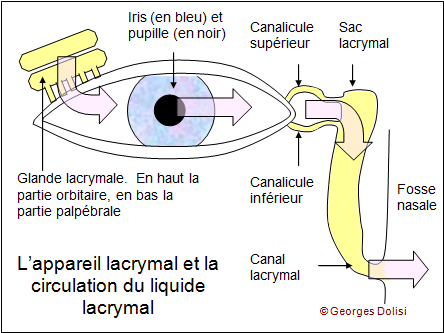Dacryocystitis is an inflammation, usually of infectious origin, of a lacrimal sac. Dacryocystitis manifests itself by a typical continuous tearing, similar to that experienced during a cold. It occurs mainly at the extreme ages of life: in newborns and people over 70 years of age. In the elderly, dacryocystitis is linked to a narrowing of the lacrimal ducts. The reduced abundance of tears leads to an increased risk of infection.
In the early stages of the infection, treatment will consist of antibiotic therapy combined with local application of antiseptic eye drops.
When the infection is more advanced, an abscess of the lacrimal sac may occur, and a red and painful swelling may appear at the corner of the eyelid. In this case, the disease requires brief hospitalization.
After numerous recurrences and depending on the patient's discomfort, a dacryocysto-rhinostomy may be performed.
External dacryocysto-rhinostomy is the treatment of obstructions located in the nasolacrimal duct. The procedure is also performed via the endonasal route with similar results and complications, except for the absence of scarring with this technique.
It consists of bypassing the obstacle by creating a stoma between the lacrimal sac and the external wall of the nasal cavity.

An anastomosis will be performed between the lacrimal sac and the nasal mucosa. This is a preferable procedure to a dacryocystectomy in cases of dacryocystitis because it will not cause the patient to have permanent watering. The procedure has a success rate of approximately 90% and eliminates all symptoms. However, it is more difficult and time-consuming than a dacryocystectomy and requires specific equipment and expertise.
The procedure involves removing a piece of the bony wall between the lacrimal sac and the middle meatus of the nose, then suturing the mucosa of the sac to the nasal mucosa of the middle meatus.
